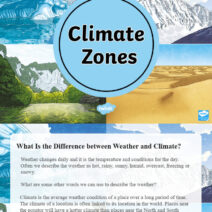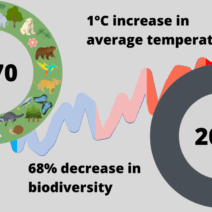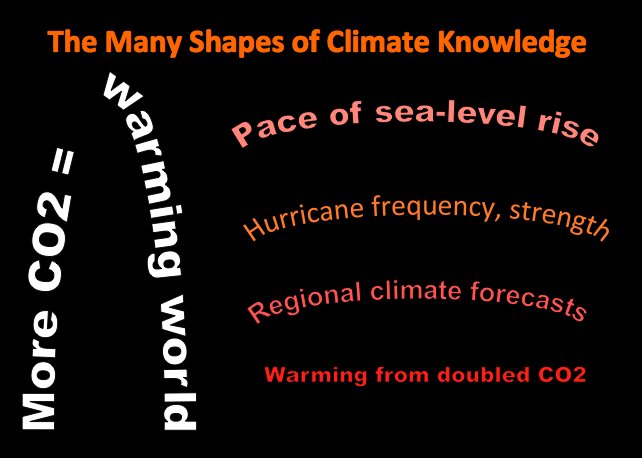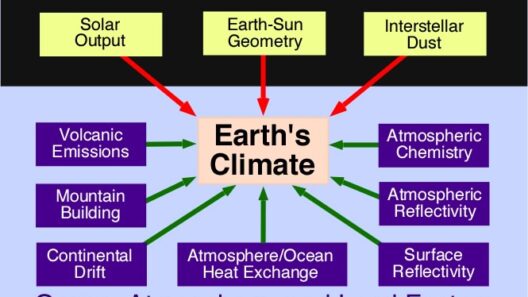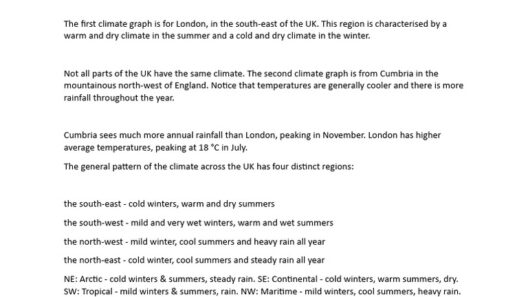Understanding climate is paramount in today’s world, where climatic shifts are not merely theoretical but are increasingly becoming personal experiences. Climate encapsulates the long-term weather patterns of a region, encompassing typical temperature ranges, precipitation levels, and a variety of atmospheric conditions. By delving deeper into its intricacies, we can empower ourselves to affect change.
The atmosphere serves as a dynamic blanket that envelops our planet. Composed of several layers, its complexity is striking. The troposphere is where we conduct our daily lives. This is where weather phenomena occur, encapsulating all that we can feel, see, and breathe. Rising above this layer is the stratosphere, which houses the ozone layer, shielding life on Earth from the sun’s harmful ultraviolet (UV) radiation. Above these layers reside others, each with distinctive properties and functions that vividly illustrate our atmosphere’s far-reaching impact on climate.
Climate differs markedly from weather. Weather refers to short-term atmospheric conditions, such as daily temperatures or precipitation. In contrast, climate is the average of these conditions over an extended period—often decades. This distinction illustrates the importance of ‘long-view’ thinking in understanding our environment. Weather can fluctuate wildly from day to day, yet climate provides the framework for understanding broader changes.
The interplay of various elements—solar radiation, atmospheric composition, and oceanic currents—shapes climate. The sun, our primary energy source, bathes the Earth in light and warmth. Yet, not every location receives this solar energy equally. The tilt of the Earth’s axis, along with its elliptical orbit around the sun, engenders seasonal variations. These differences not only dictate agricultural practices but also influence ecosystems and biodiversity.
It is essential to recognize the role of greenhouse gases in the Earth’s atmosphere. Carbon dioxide (CO2), methane (CH4), nitrous oxide (N2O), and water vapor are not mere constituents; they are vital components that trap heat. This phenomenon, known as the greenhouse effect, ensures that our planet remains habitable. However, human activities, such as burning fossil fuels and deforestation, have exacerbated the concentration of these gases, leading to enhanced greenhouse effects and, subsequently, global warming.
Long-term climate trends highlight the alarming metamorphosis of our planet. Average global temperatures have risen significantly since the late 19th century. Concurrently, we witness the melting of polar ice caps and glaciers, raising sea levels and disrupting marine ecosystems. This dynamic is not merely a statistic; it illustrates the imminent risks facing coastal communities worldwide. It also resonates with the fundamental question: How do we adapt to these unprecedented changes?
Ocean currents, too, are pivotal in regulating climate. They function like conveyor belts, redistributing heat across the planet. The Gulf Stream, for instance, carries warmth from the tropics to the northern Atlantic, influencing weather patterns far beyond its immediate vicinity. Disruptions to these currents could incite dramatic alterations in climate—witness the potential consequences of the Arctic ice melt, which threatens to impact global weather systems and marine health.
It is imperative to understand that climate systems are not linear. Feedback loops, such as those seen in permafrost thawing, present cascading implications. As permafrost thaws, previously trapped greenhouse gases are released into the atmosphere, further intensifying global warming. This vicious cycle emphasizes the importance of mitigating climate change and adopting more sustainable practices before we reach critical tipping points.
In addition to rising temperatures, the increasing frequency and severity of extreme weather events serve as a stark reminder of our changing climate. From hurricanes and droughts to wildfires and floods, communities around the world are grappling with the severe consequences of these events. This points to the need for robust infrastructure capable of withstanding climatic pressures and a society that embraces resilience as a fundamental principle.
Climate justice emerges as a crucial facet of climate discourse. Vulnerable populations often bear the brunt of climate impacts, despite contributing the least to greenhouse gas emissions. Addressing this inequity is not only a moral imperative but also vital for global stability. Recognizing the interconnectedness of climate challenges fosters a more comprehensive approach to solutions.
As we dissect these complex layers of our atmosphere, a fascinating paradox arises. While human ingenuity has contributed significantly to climatic changes, it also possesses the capacity to reverse the tide. Renewable energy sources—solar, wind, and hydropower—represent a paradigm shift. By harnessing the energy of the sun and the winds, we can mitigate our carbon footprint and create a more sustainable world.
In conjunction with renewable energy, innovative practices such as reforestation, sustainable agriculture, and carbon capture technology present promising avenues for combating climate change. Each effort adds to a collective arsenal aimed at restoration and preservation of our planet’s ecosystems.
Engagement at all levels is critical. Individuals can contribute by making conscious choices, such as reducing waste, conserving energy, and supporting sustainable products. Communities can advocate for policies that prioritize eco-friendly practices and resilient infrastructures. Collectively, these actions inform a broader narrative about climate stewardship and accountability.
Ultimately, understanding what climate is and how it operates is not simply an academic exercise; it is a prerequisite for action. The more we comprehend the nuances of our atmosphere, the better equipped we are to advocate for its protection. In navigating this complex landscape, we invite curiosity, foster resilience, and instigate change. The time is ripe for a paradigm shift in our relationship with the Earth—one where knowledge paves the way for a more sustainable, equitable future.
